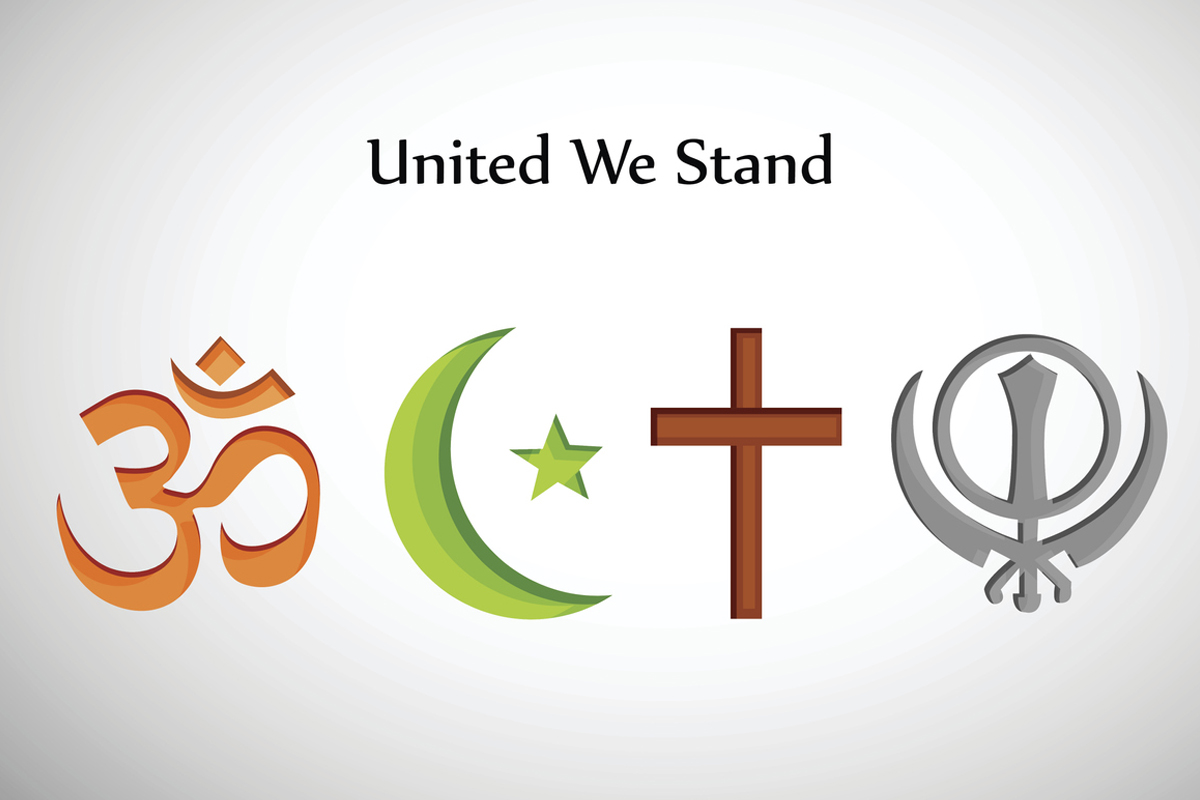Western secularism separates religion and State. But India’s secularism separates them partially. With a view to creating a divorce between religion and State in India there is no official State religion and State-owned educational institutions cannot impart religious instructions. But at the same time, an overlap between religion and State has been permitted in India. Institutions that are not entirely financed by the State can mandate religious instruction and the State can provide financial aid to maintain and construct religious buildings or infrastructure. India’s constitutional framework allows extensive State interference in religious affairs.
The term ‘secularism’ in India differs from the French concept of ‘secularity’. While the French concept demands absence of government institutions in religion as well as absence of religion in government institutions and schools, the Indian concept in contrast provides financial support to religious schools and accepts religious laws over government institutions. The Indian structure has created incentives for various religious denominations to start and maintain schools, impart religious education, and receive partial but significant financial support from the government.
Similarly, the government has established statutory institutions to regulate and financially administer the Islamic Central Wakf Council, historical Hindu temples, Buddhist monasteries, and certain Christian religious institutions. This direct involvement of the government in matters religious is markedly different from Western secularism. According to Ashis Nandy, a better term for Indian secularism would be religious tolerance. Secularism as practised in India has become a controversial issue. Supporters of the Indian concept of secularism claim that it respects minorities and pluralism.
Critics contend that the Indian form of secularism is psedo-secularism. Sadanand Dhume criticizes Indian secularism along the lines of religious appeasement. He has written that the flawed understanding of secularism among India’s leftwing intelligentsia has led the government to take a soft stand against Islamic terrorism, religious militancy and communal disharmony in general. Amartya Sen suggests that secularism in the political sense requires the separation of the State from any particular religious order. This can be interpreted in at least two different ways.
The first argues that the State be equidistant from all religions refusing to take sides and with a neutral attitude towards them. The second view insists that the State must not have any relation at all with any religion. In both interpretations, secularism goes against giving any religion a privileged position in the activities of the State. Sen argues that the first form is more suited to India, where there is no demand that the State stay clear of any association with any religious matter whatsoever. What is necessary is to make sure that in so far as the State has to deal with different religions and members of different religious communities, there must be a basic symmetry of treatment.
Sen does not claim that modern India is symmetric in its treatment. His critics claim that secularism, as practised in India, is not the secularism of first or the second variety that Sen enumerates. In the reckoning of Taslima Nasreen, Indian secularists as pseudo secularists. She has accused them of being biased towards Muslims saying, “Most secular people are pro-Muslims and anti-Hindu. They protest against the acts of Hindu fundamentalists and defend the heinous acts of Muslim fundamentalists”. She also said that most Indian politicians appease Muslims and leads to anger among Hindus.
Maulana Arshad Madani stated that seventy years ago the reason for the division of India was sectarianism. If the same temptation becomes evident today, then the result will be the same. Madani is a staunch critic of sectarianism in India. He is of the opinion that India was divided in 1947 because of sectarianism. He suggests that secularism is inevitable for the solidarity and integrity of India. In the early years after Independence, Jawaharlal Nehru and the Congress had advocated an Indian brand of secularism designed to hold the country’s disparate communities together under one roof. Indeed, Nehru often stated that India’s composite culture was one of its greatest strengths.
The Hindu nationalists have harboured a starkly different view. They envision India as a majoritarian nation-state, not a multicultural one. The tensions inherent in these competing visions of Indian nationhood have come to the fore in recent years, especially since the BJP’s landmark electoral victory in 2014. The political dominance of the BJP’s brand of Hindu nationalism since the 2014 election has called into question the future viability of the country’s secularist tradition and commitment to diversity. Hindu nationalist ideologues have created much confusion around the notion of secularism, claiming that its proponents have tried to make the state hostile or indifferent towards religion.
That was certainly not the intention of the architects of modern India, whose enemy was not religion, but communalism. The Hindu nationalists held that Indian identity was embodied in Hinduism because Hindus formed the country’s majority community and were sons of the soil. Nehru considered Hindu communalism to be the country’s top enemy. Between the 1950s and the 1970s, India’s secular model seemed to work reasonably well. Religious minorities, including Muslims, remained well-represented in the country’s elected assemblies. Furthermore, communal riots were relatively rare during this period.
To combat communalism, Nehru sought to prevent Indian politicians from exploiting religion for political gain and sanctioned those who promoted religious polarization. Nehru fought against all forms of communalism (whether Hindu, Muslim or Sikh), not against religion per se. This is evident from the fact that he never intended to separate politics and religion. He outlined his views on the subject in 1961. Some people think it means something opposed to religion. That obviously is not correct. What it means is that it is a state which honours all faiths equally and gives them equal opportunities. But Nehru’s use of the word “equally” is slightly misleading, as the State has not observed a clear-cut equidistance vis-à-vis every religious community.
This is why Bhargava terms India’s secular approach as one of “principled distance”… not equidistance. Indeed, the government has sometimes applied different standards to different religious communities. For example, the state reformed Hindu personal laws according to a series of new Hindu code bills without imposing similar changes on religious minorities. Muslims, for instance, were allowed to retain the Sharia law.
(To be concluded)
(The writer is former Head of the Department, Political Science, Asutosh College, Kolkata)










